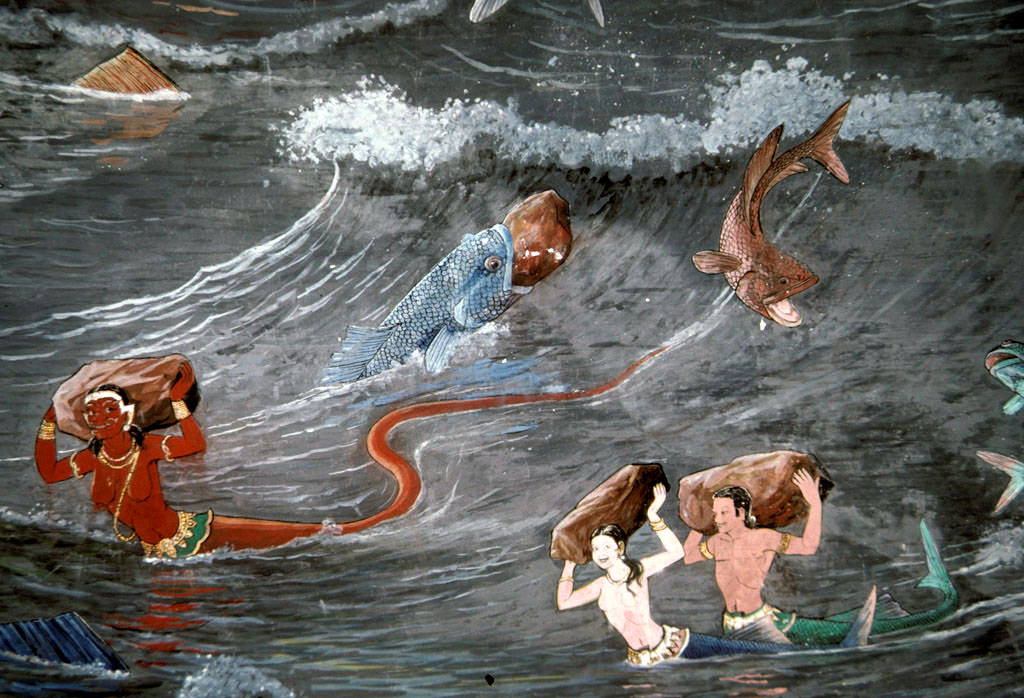The spices are the very essence of Indian cuisine and these colorful ingredients are what bind the rich Indian culinary tradition together. Like Indian culture, Indian cuisine has also been influenced by the outside invasions on India.

The cuisine in the northern and western parts of India is influenced by Central Asia while on the east and north-east of India in West Bengal and Assam respectively, the cuisine show the shades of East Asian cuisine.
The heritage tour of India is the perfect way to savour the taste of India. Indian heritage does not only include art, architecture, dance and handicraft but also the cuisine that reflects the eating habits in different regions of India. That is what makes India a different palce to live in..

If you paln a tour to India it is not complete without savouring the flavours of India. So, whichever part of the country you travel, you will find a cuisine or delicacy exclusive to the region. If you are in the northern parts of the country, Mughlai cuisine is worth checking out.
On the southern side of India, one gets a variety of gourmet dishes that differ from state to state. Hyderbad in Andhra Pradesh is popular for its biryanis while Kerala is known its dosas, uttpams idlis and vadas. Sambhar is another popular delicacy in South India particularly in Kerala.
India has a variety of street food too. The street food in India is not exclusive to one particular place or region. One can find rows of street vendors virtually anywhere in India serving sumptuous delicacies.
Most Indian hotels serve different cuisine from different corners of India. Some of them even have speciality restaurants that serve the cuisine of a particular region. Come and tickle your taste buds with Indian cuisine on your journey to India with Heritage in India.
![Reblog this post [with Zemanta]](http://img.zemanta.com/reblog_e.png?x-id=724eee0d-a839-4b88-bf4f-da4cbabb748e)

The cuisine in the northern and western parts of India is influenced by Central Asia while on the east and north-east of India in West Bengal and Assam respectively, the cuisine show the shades of East Asian cuisine.
The heritage tour of India is the perfect way to savour the taste of India. Indian heritage does not only include art, architecture, dance and handicraft but also the cuisine that reflects the eating habits in different regions of India. That is what makes India a different palce to live in..

If you paln a tour to India it is not complete without savouring the flavours of India. So, whichever part of the country you travel, you will find a cuisine or delicacy exclusive to the region. If you are in the northern parts of the country, Mughlai cuisine is worth checking out.
On the southern side of India, one gets a variety of gourmet dishes that differ from state to state. Hyderbad in Andhra Pradesh is popular for its biryanis while Kerala is known its dosas, uttpams idlis and vadas. Sambhar is another popular delicacy in South India particularly in Kerala.
India has a variety of street food too. The street food in India is not exclusive to one particular place or region. One can find rows of street vendors virtually anywhere in India serving sumptuous delicacies.
Most Indian hotels serve different cuisine from different corners of India. Some of them even have speciality restaurants that serve the cuisine of a particular region. Come and tickle your taste buds with Indian cuisine on your journey to India with Heritage in India.
![Reblog this post [with Zemanta]](http://img.zemanta.com/reblog_e.png?x-id=724eee0d-a839-4b88-bf4f-da4cbabb748e)

![Reblog this post [with Zemanta]](http://img.zemanta.com/reblog_e.png?x-id=ef364471-76c9-4780-ab02-09e84a365f90)

![Reblog this post [with Zemanta]](http://img.zemanta.com/reblog_e.png?x-id=3a694d9d-2a8e-46b4-81fc-3ddccee3a8ab)






